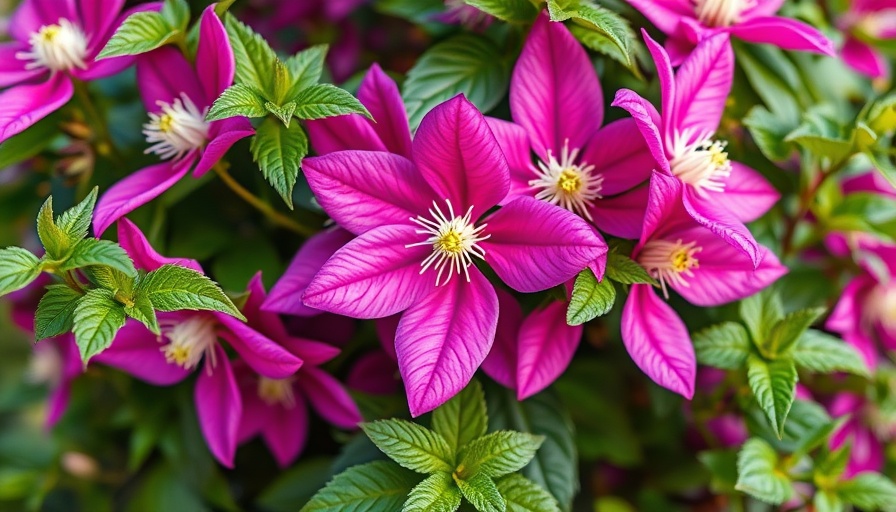
Clematis Vines: A Garden Gem
Clematis vines, known for their stunning blooms and elegant growth patterns, can dramatically enhance your garden's aesthetic appeal. Not only do they produce magnificent flowers in a range of colors, but they also create a lush backdrop that attracts pollinators and adds depth to your garden design. Proper pruning is essential for maintaining these beautiful vines and ensuring they thrive year after year.
The Importance of Pruning for Healthy Blooms
Pruning plays a critical role in the health and productivity of clematis vines. For many gardeners, the idea of pruning can be daunting, especially when it comes to cutting back stems that may still seem vibrant and alive. However, the rewards of pruning—like increased flowering and bushier growth—far outweigh the initial reluctance to part with old foliage.
First-Year Pruning: Patience is Key
For clematis growers starting their journey, the first year involves a hard cutback to around six to twelve inches in late winter, regardless of the pruning group. It might be challenging to forgo the blooms in the initial season, particularly for Group 1 and 2 varieties that bloom on old wood, but this strategy cultivates stronger plants with lower buds ready to produce a stunning show the following years. Remember, envision the vibrant display you will create to help mitigate the initial disappointment!
Second-Year Care: Building a Strong Frame
As your clematis matures, the care routine involves a thoughtful approach. A repeat of the hard pruning in the second year is advisable, reducing the height to about three feet, which allows some old wood to remain. This balance fosters the development of more stems, ensuring not merely survival but a lush floral showcase in subsequent seasons. Although this slower growth may initially frustrate your eagerness for blossoms, the ultimate gains in flower production make it worthwhile.
Understanding the Three Groups of Clematis
To master the art of pruning, it's essential to understand the three primary groups of clematis based on their blooming patterns:
- Group 1: Early spring bloomers that flower on old wood. Prune this group immediately after flowering to promote future blooms.
- Group 2: Repeat flowers that bloom on both old and new wood. These benefit from a light cutback in early spring, just before new growth emerges.
- Group 3: Late bloomers that flower on new wood. They should be cut back hard in late winter for robust growth and abundant blooms.
By identifying your clematis type, you can personalize your pruning strategy to enhance your plant's health and flowering potential.
Common Pruning Misconceptions
Many gardeners struggle with misconceptions about pruning. One common myth is that heavy pruning will damage the plant. In reality, proper and strategic pruning encourages vitality by allowing more light and air circulation to the interior of the plant. Additionally, some may worry that a lack of flowers in early years means failure; however, understanding that sacrifice of short-term blooms leads to long-term benefits is vital for clematis success.
Practical Tips for Effective Pruning
- Utilize clean, sharp pruning tools to avoid damage and disease transfer.
- Make cuts at a slant just above a bud to allow for effective healing.
- Consider the design of your garden; allow clematis to grow against trellises or fences to maximize their visual impact.
- Watch for signs of wilting or disease as you prune, which can guide your garden maintenance decisions.
By implementing these tips, you can foster vibrant growth and a thriving flower garden.
Conclusion: Embrace the Journey of Growth
With the right care and attention, clematis vines can become a focal point of any garden. While the process of pruning may feel intimidating at first, embracing these practices will enhance your gardening experience and reward you with a breathtaking floral display. As you cultivate your clematis, remember that the journey toward voluminous blooms is one of patience and practice, culminating in a thriving, vibrant garden.
Let your gardening passion flourish by exploring more about garden design and the right pruning techniques for other beautiful plants. Happy gardening!
 Add Row
Add Row  Add
Add 




Write A Comment